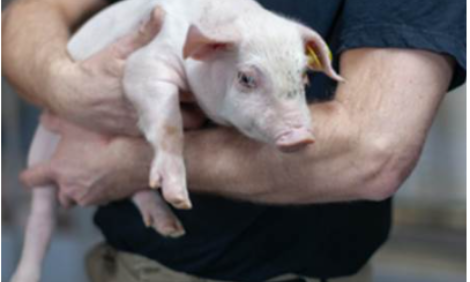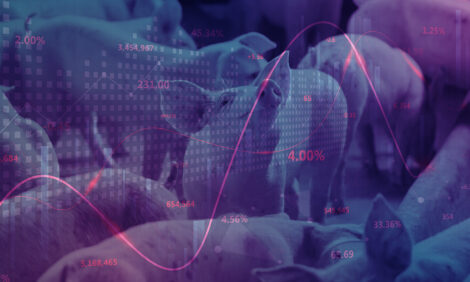



Pork Outlook Report - July 2004
By U.S.D.A., Economic Research Service - This article is an extract from the July 2004: Livestock, Dairy and Poultry Outlook Report, highlighting Global Pork Industry data. Although returns to pork producers have been favorable, the June Quarterly Hogs and Pigs report indicated that producers remain cautious in their future production plans and reduced the breeding hog inventory.
Pork Outlook Report - July 2004 - By U.S.D.A., Economic Research Service - This article is an extract from the July 2004: Livestock, Dairy and Poultry Outlook Report, highlighting Global Pork Industry data. Although returns to pork producers have been favorable, the June Quarterly Hogs and
Pigs report indicated that producers remain cautious in their future production plans and
reduced the breeding hog inventory.

Although returns to pork producers have been
favorable, the June Quarterly Hogs and Pigs report
indicated that producers remain cautious in their
future production plans and reduced the breeding
hog inventory. However, since the survey, recent
returns are favorable and in July, USDA lowered
the projected 2004/05 corn price range to $2.30 to
$2.70 per bushel, down 25 cents on each end of the
range from June. Based on the expectations of
continued favorable returns and moderating corn
prices, pork production forecasts for 2004 and 2005
are increased slightly from earlier expectations.
Hog prices are expected to average in the mid-to-high
$40s per hundredweight (cwt).
Despite a declining breeding inventory, pork production and hog prices are projected to be about the same in 2004 and 2005. The June report indicated a 2-percent decline in the breeding inventory from a year ago and a 1-percent increase in the market hog inventory. Although the number of sows farrowing during December-May was down 1 percent from the same period a year earlier, the pig crop for the period rose 1 percent as more pigs per litter more than offset the lower farrowings. The increase in the June 1 market inventory also reflected increased feeder pig imports from Canada during January-May. Based on the June 1 market hog inventory, the December-May pig crop, first-half 2004 feeder pig imports, and projected second-half slaughter hog imports, hog slaughter in the second half of 2004 is expected to be about 1 percent higher than in 2003. Dressed weights are expected to increase slightly over a year ago; as a result pork production is expected to be up nearly 2 percent from a year earlier.
If producers’ intentions as of June 1 are realized,
the number of sows farrowing during June-
November will decline about 1 percent from actual
farrowings a year ago. Given only a marginal
uptick in the number of pigs per litter, the June-
November pig crop would be nearly the same as a
year ago. Current expectations are that feeder pig
imports during June-December will also be near
year ago levels. As a result, hog slaughter in the
first half of 2005 will be essential unchanged from
a year ago, but expected heavier hogs will boost
pork production slightly.
Expectations are that the December 2004- May 2005 pig crop will be about the same as a year ago. The number of sows farrowing and the number of pigs per litter are expected to remain essentially unchanged from a year earlier. Feeder pig imports are also expected to plateau pointing to a secondhalf 2005 hog slaughter about the same as projected for this year. Pork production during the period is expected to inch upward due to the continuing slow rise in dressed weights. Hog prices in 2004 are expected to average $48- $49 per cwt as both domestic and foreign demands remain strong. In June, hog prices were up 21 percent over a year ago while the pork carcass cutout in June was up 18 percent. Meat prices of all major species are running above year-earlier levels. Pork exports in 2004 have likely benefited from trade restrictions on U.S. beef and poultry products imposed by several countries. Hog prices in 2005 are expected to average $45-$49 per cwt, as demand is expected to dampen somewhat from this year.
Source: Livestock, Dairy and Poultry Outlook - U.S. Department of Agriculture, Economic Research Service - July 2004

However, since the survey, returns have been favorable and in July, USDA lowered the projected 2004/05 corn price range to $2.30 to $2.70 per bushel, down 25 cents on each end of the range from June. Based on the expectations of continued favorable returns and moderating corn prices, pork production forecasts for 2004 and 2005 are increased slightly from earlier expectations to about 20.5 billion pounds each year. Hog prices are expected to average in the mid-to-high $40s per hundredweight.
Despite Favorable Returns, Pork Producers Remain Cautious
|
Weekly Hog Slaughter
Percent change from last year 
|
Despite a declining breeding inventory, pork production and hog prices are projected to be about the same in 2004 and 2005. The June report indicated a 2-percent decline in the breeding inventory from a year ago and a 1-percent increase in the market hog inventory. Although the number of sows farrowing during December-May was down 1 percent from the same period a year earlier, the pig crop for the period rose 1 percent as more pigs per litter more than offset the lower farrowings. The increase in the June 1 market inventory also reflected increased feeder pig imports from Canada during January-May. Based on the June 1 market hog inventory, the December-May pig crop, first-half 2004 feeder pig imports, and projected second-half slaughter hog imports, hog slaughter in the second half of 2004 is expected to be about 1 percent higher than in 2003. Dressed weights are expected to increase slightly over a year ago; as a result pork production is expected to be up nearly 2 percent from a year earlier.
|
Retail Pork Price
Percent change from previous month 
|
Expectations are that the December 2004- May 2005 pig crop will be about the same as a year ago. The number of sows farrowing and the number of pigs per litter are expected to remain essentially unchanged from a year earlier. Feeder pig imports are also expected to plateau pointing to a secondhalf 2005 hog slaughter about the same as projected for this year. Pork production during the period is expected to inch upward due to the continuing slow rise in dressed weights. Hog prices in 2004 are expected to average $48- $49 per cwt as both domestic and foreign demands remain strong. In June, hog prices were up 21 percent over a year ago while the pork carcass cutout in June was up 18 percent. Meat prices of all major species are running above year-earlier levels. Pork exports in 2004 have likely benefited from trade restrictions on U.S. beef and poultry products imposed by several countries. Hog prices in 2005 are expected to average $45-$49 per cwt, as demand is expected to dampen somewhat from this year.
Links
For more information view the full Livestock, Dairy and Poultry Outlook - July 2004 (pdf)Source: Livestock, Dairy and Poultry Outlook - U.S. Department of Agriculture, Economic Research Service - July 2004








